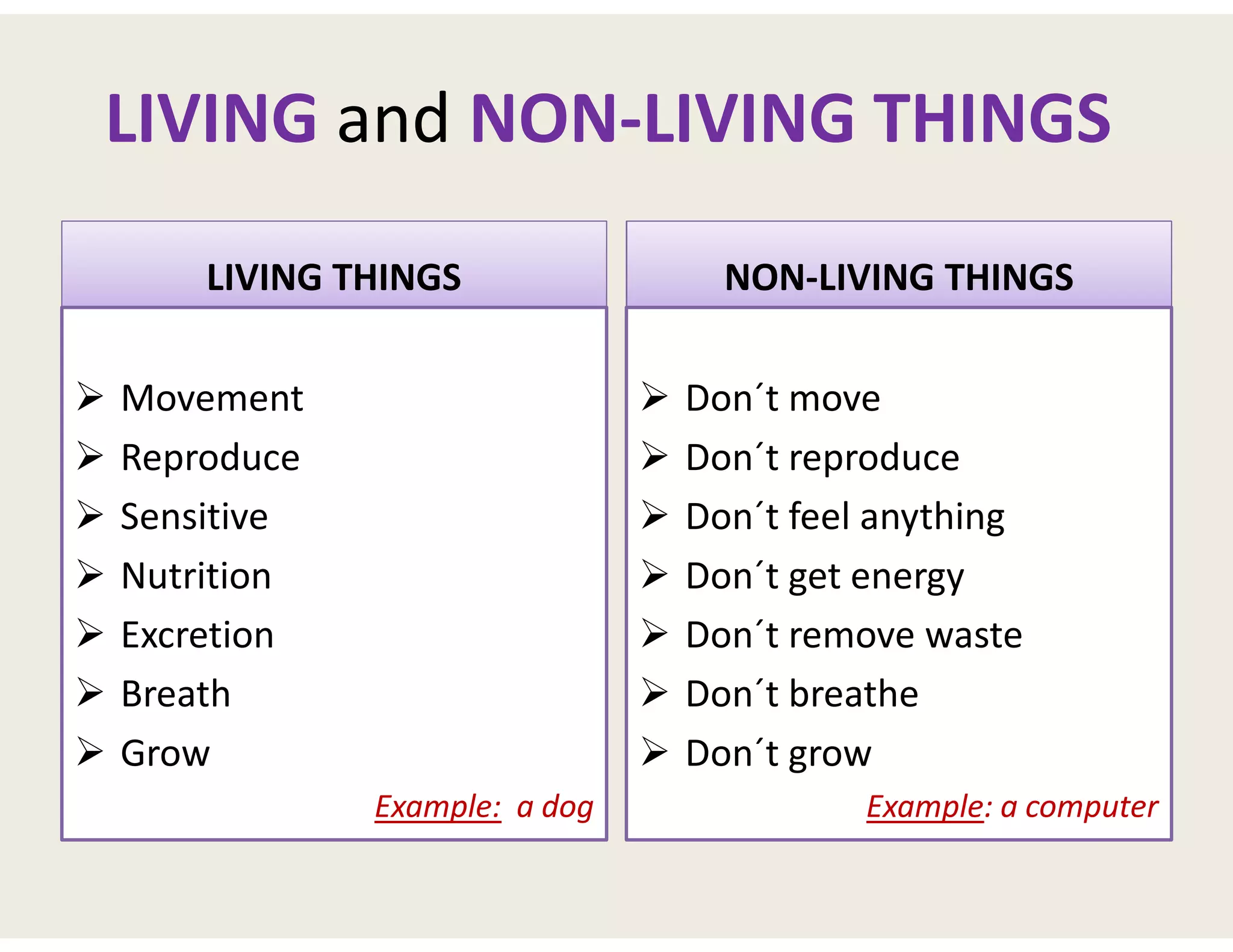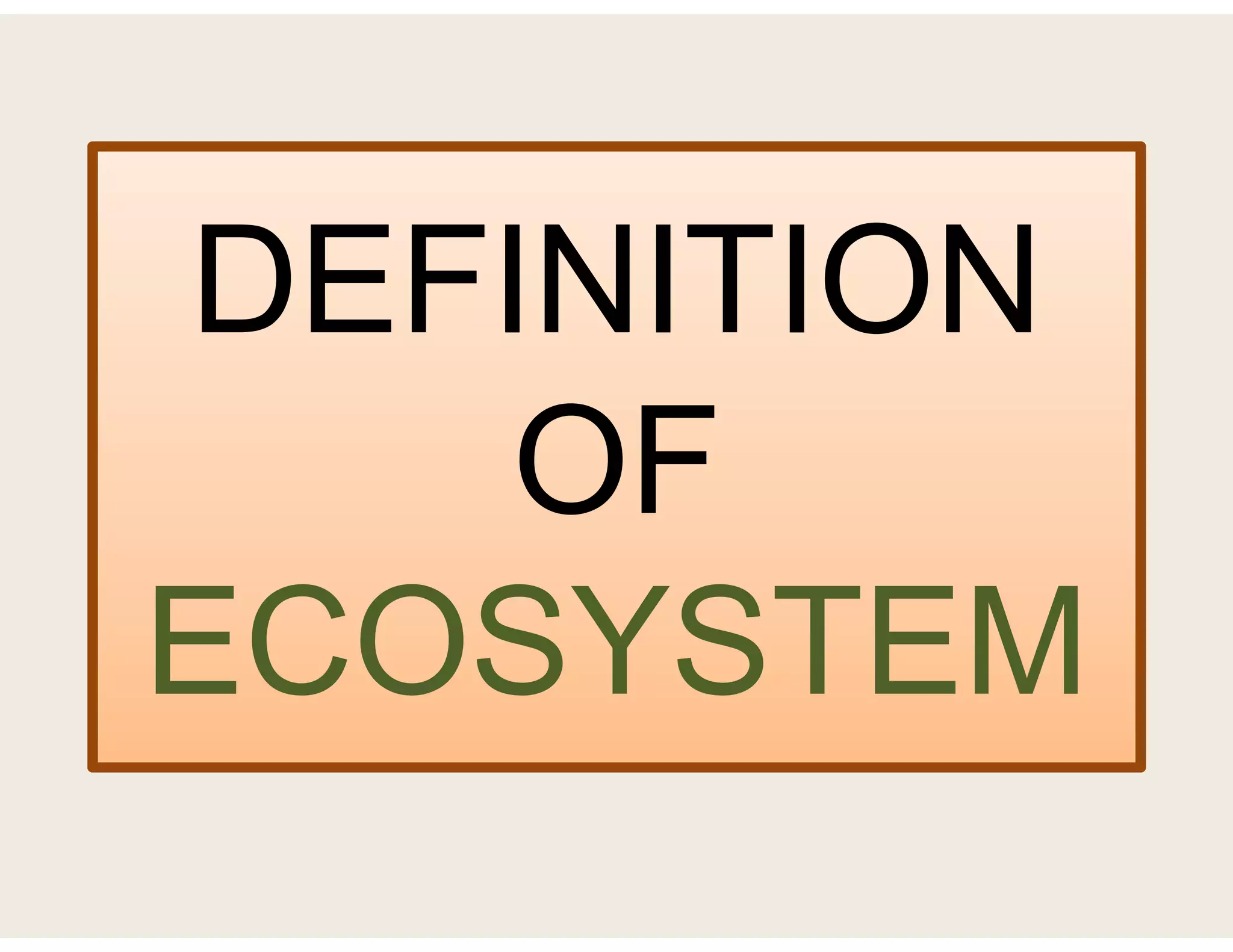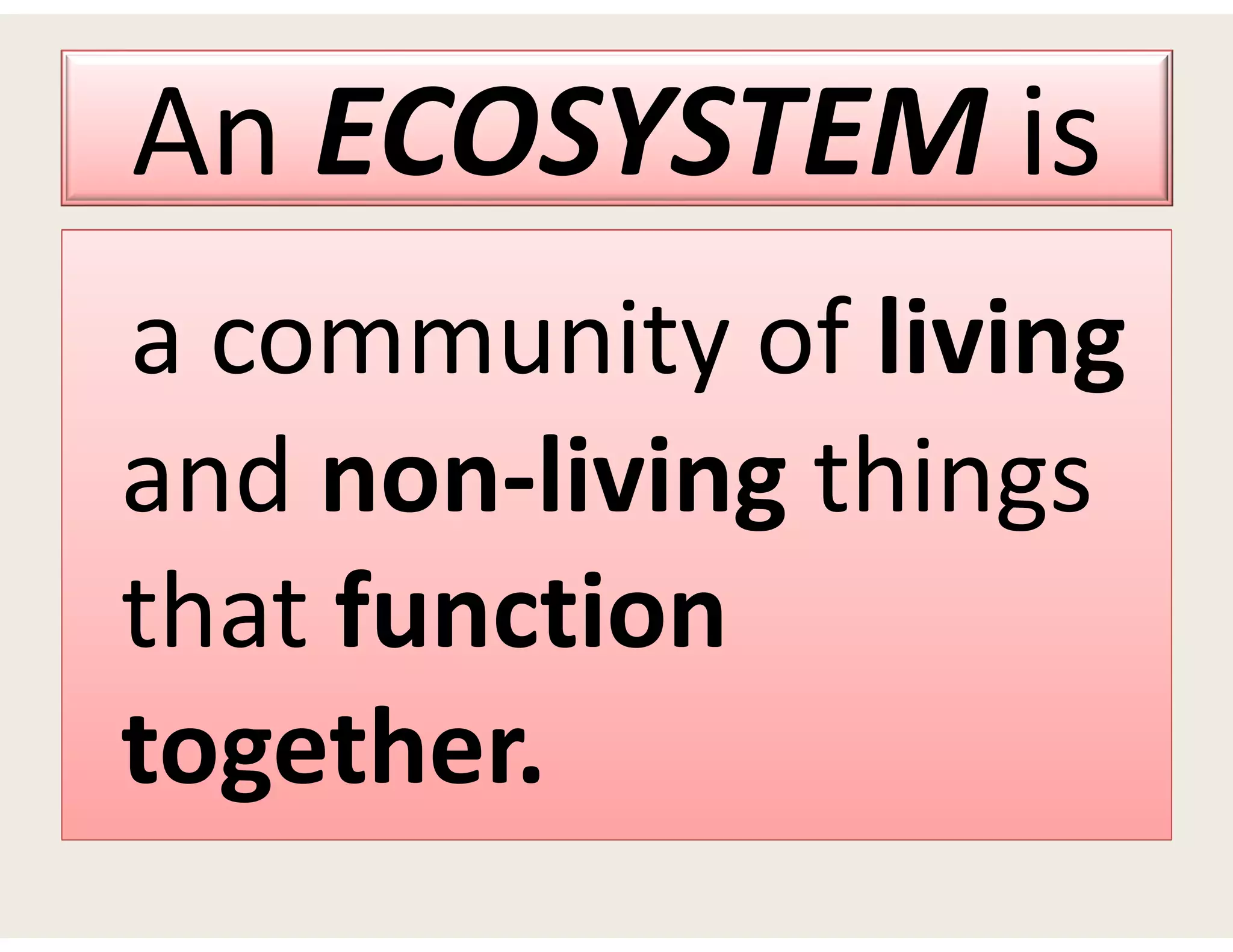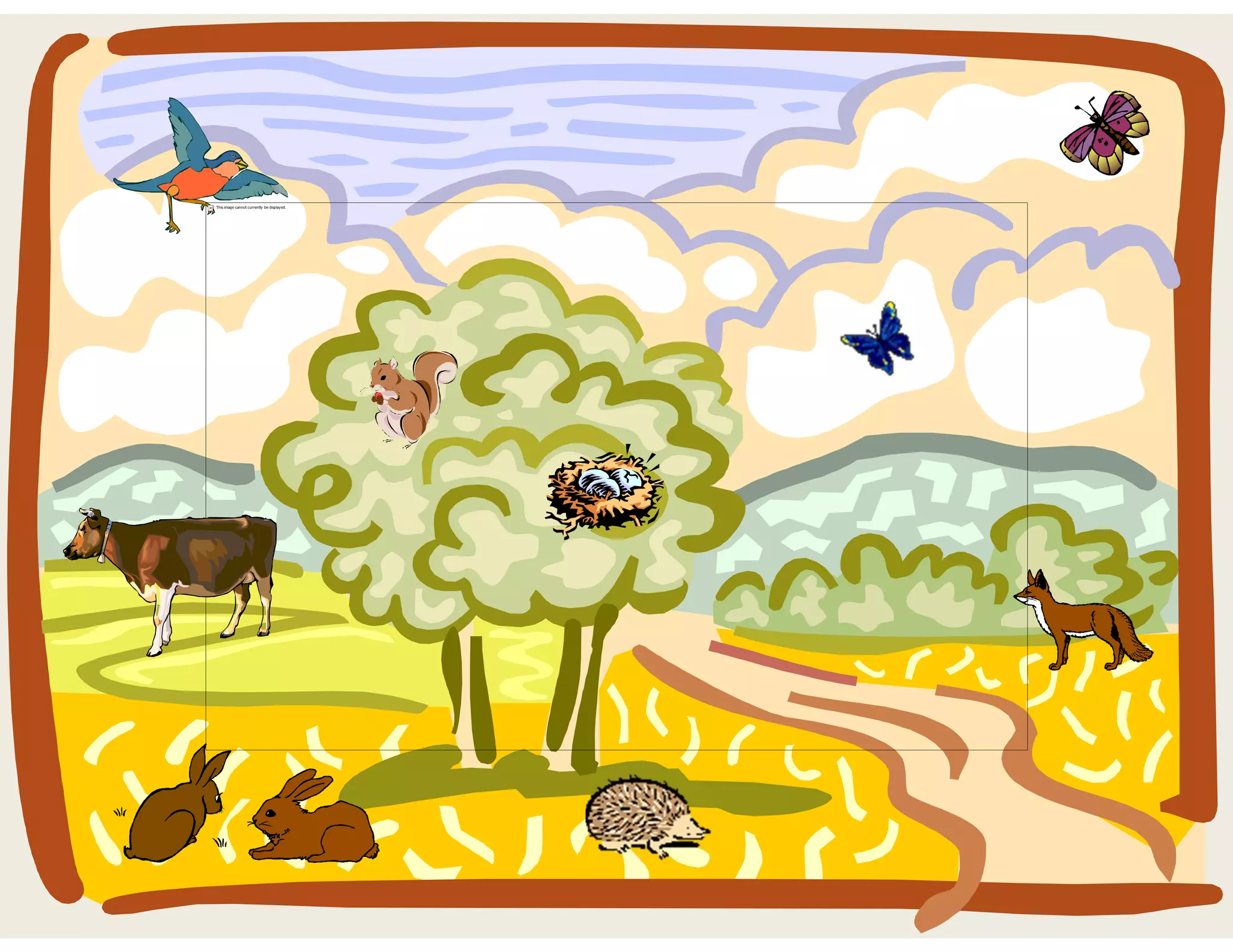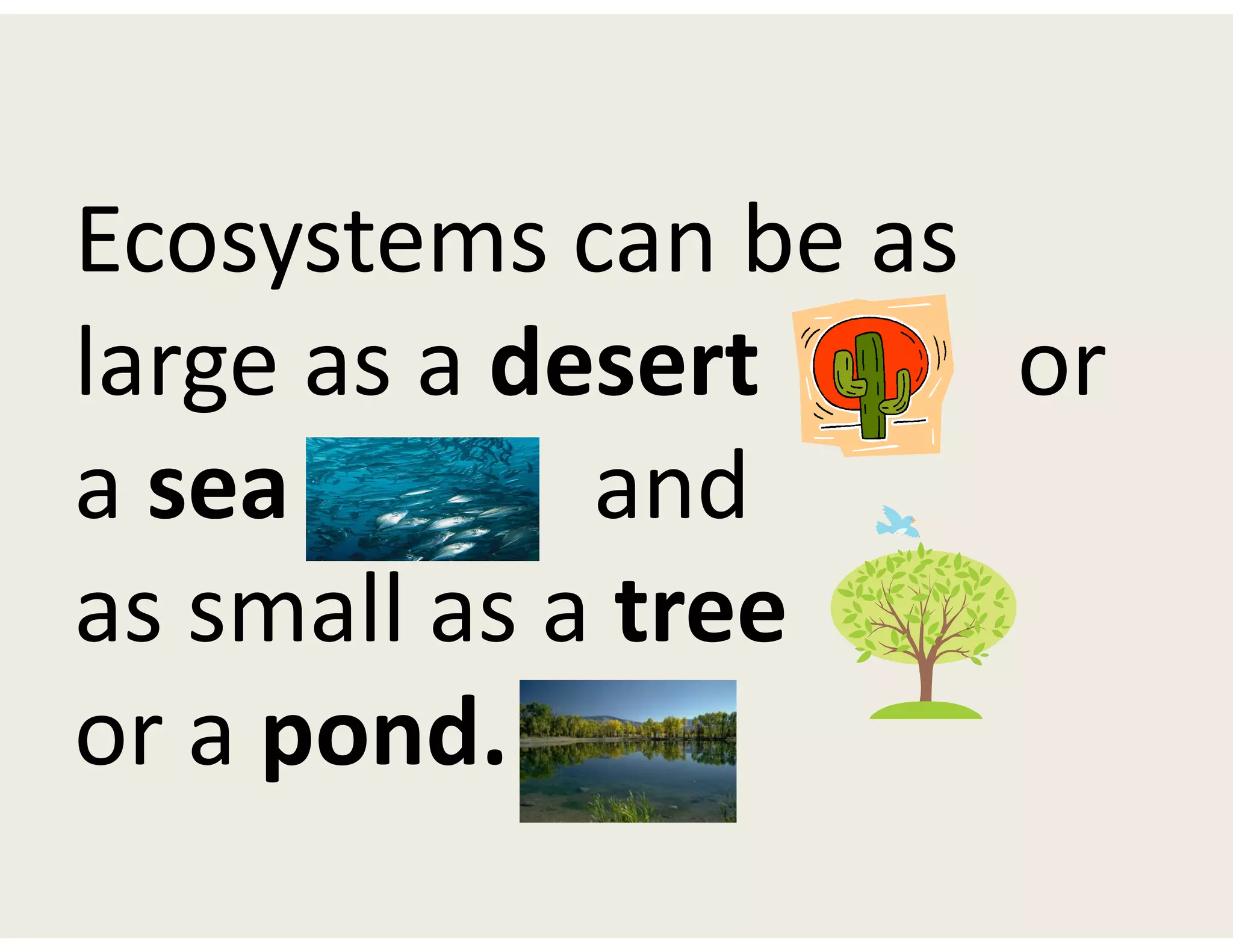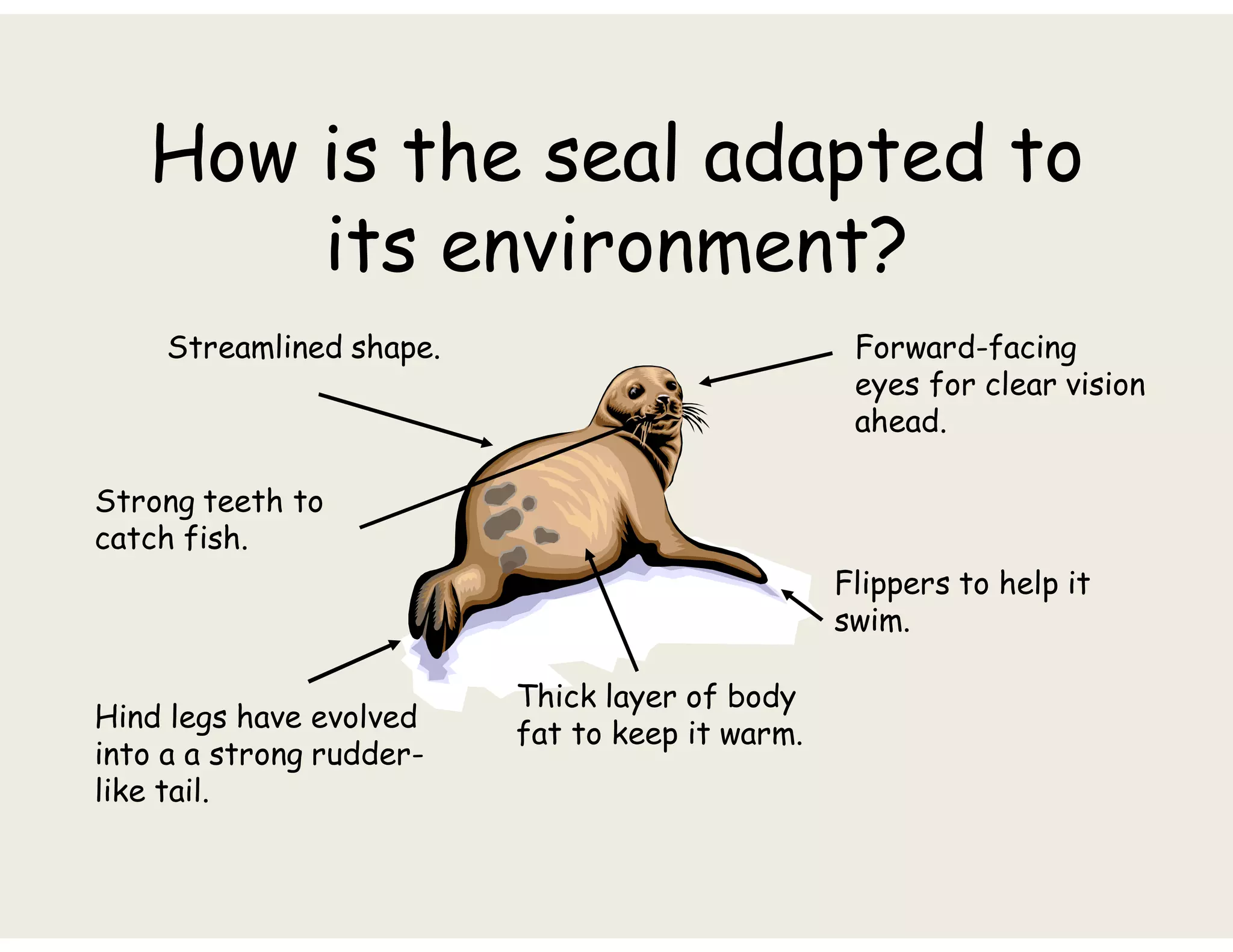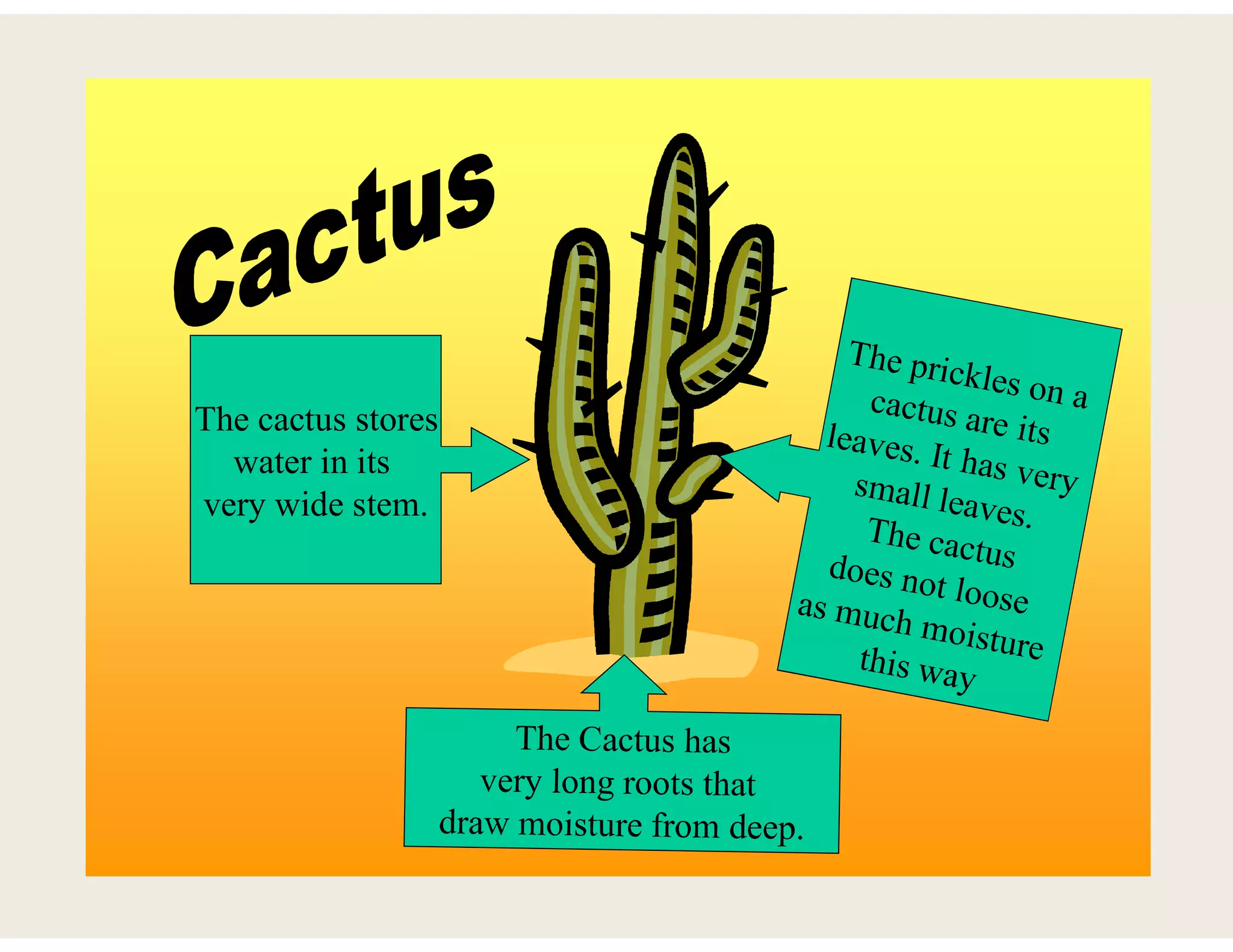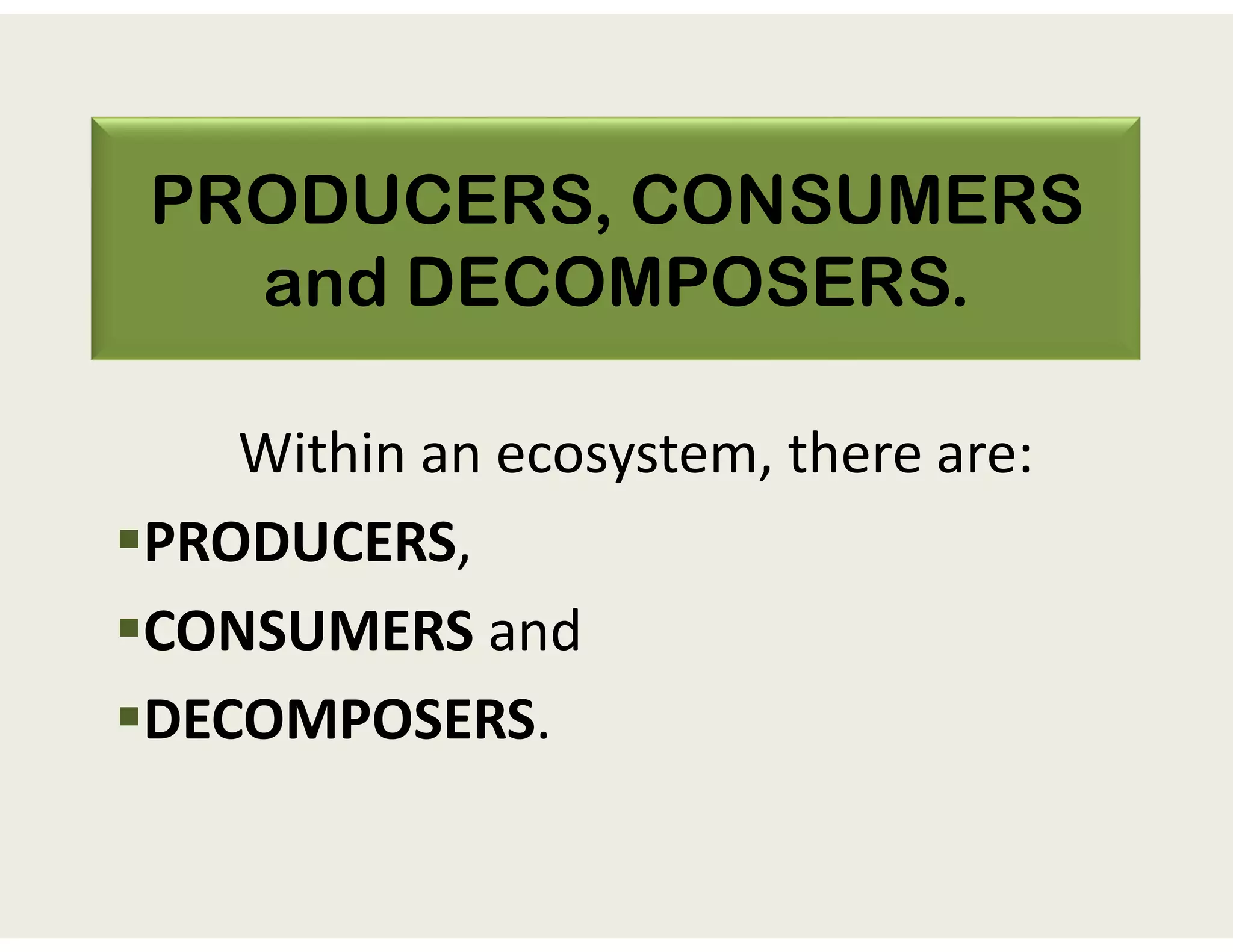An ecosystem is a community of living and non-living things that function together within a specific environment. Ecosystems can vary in size from small like a pond to very large like oceans, and are made up of producers, consumers, and decomposers. Producers like plants produce their own food through photosynthesis, consumers include herbivores, carnivores and omnivores that eat producers or other consumers, and decomposers break down dead organic matter and cycle nutrients in the ecosystem.

